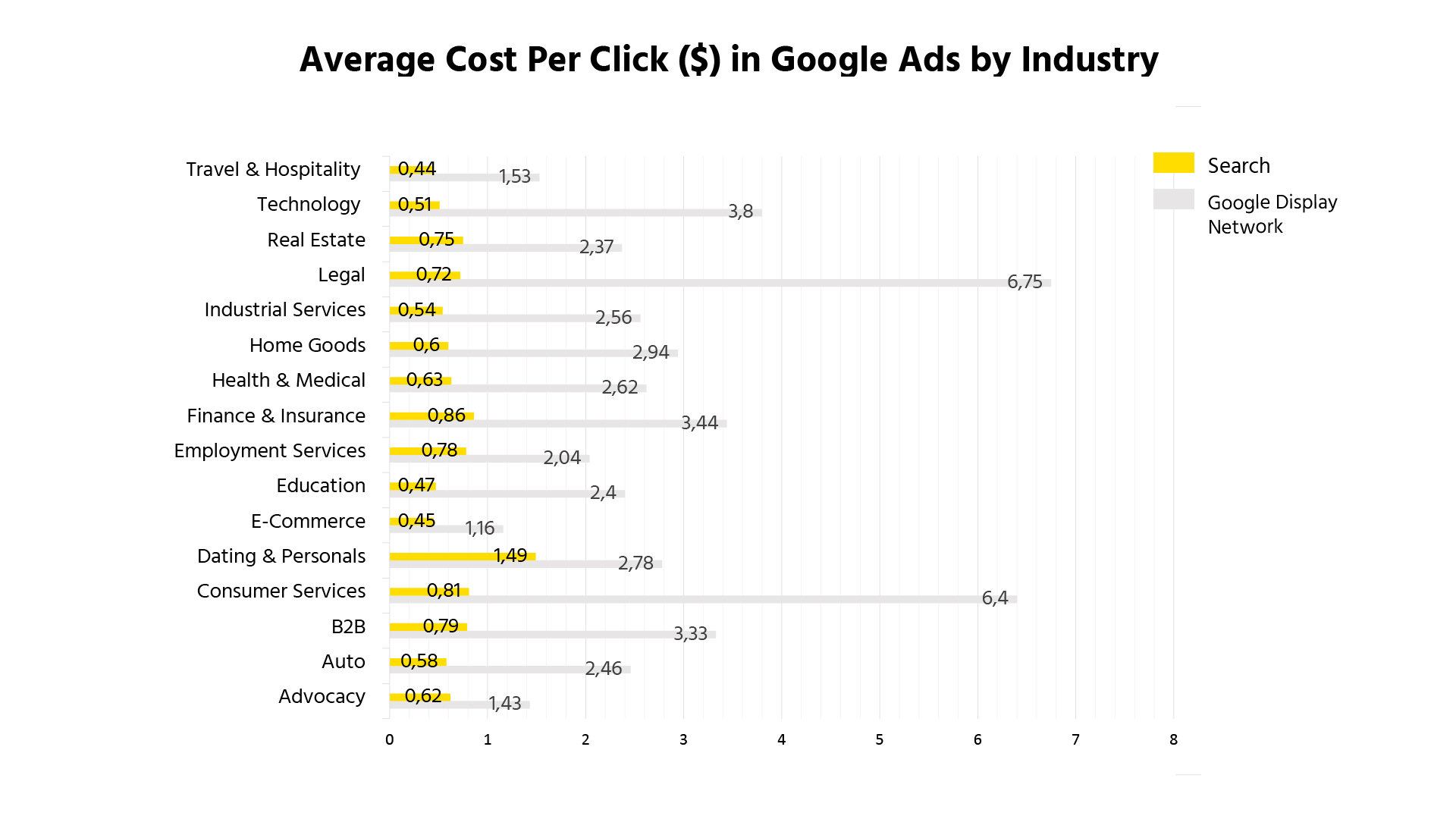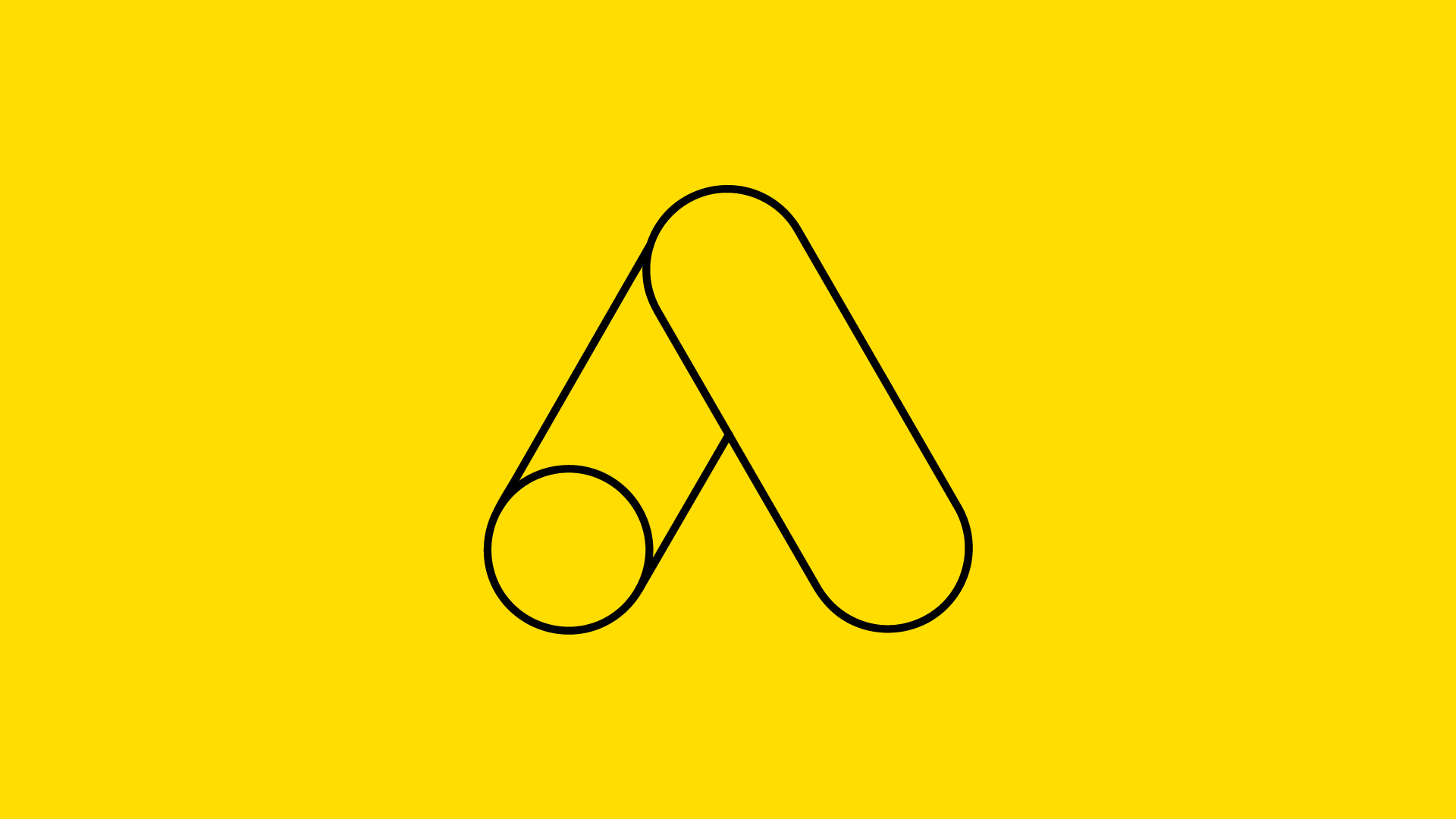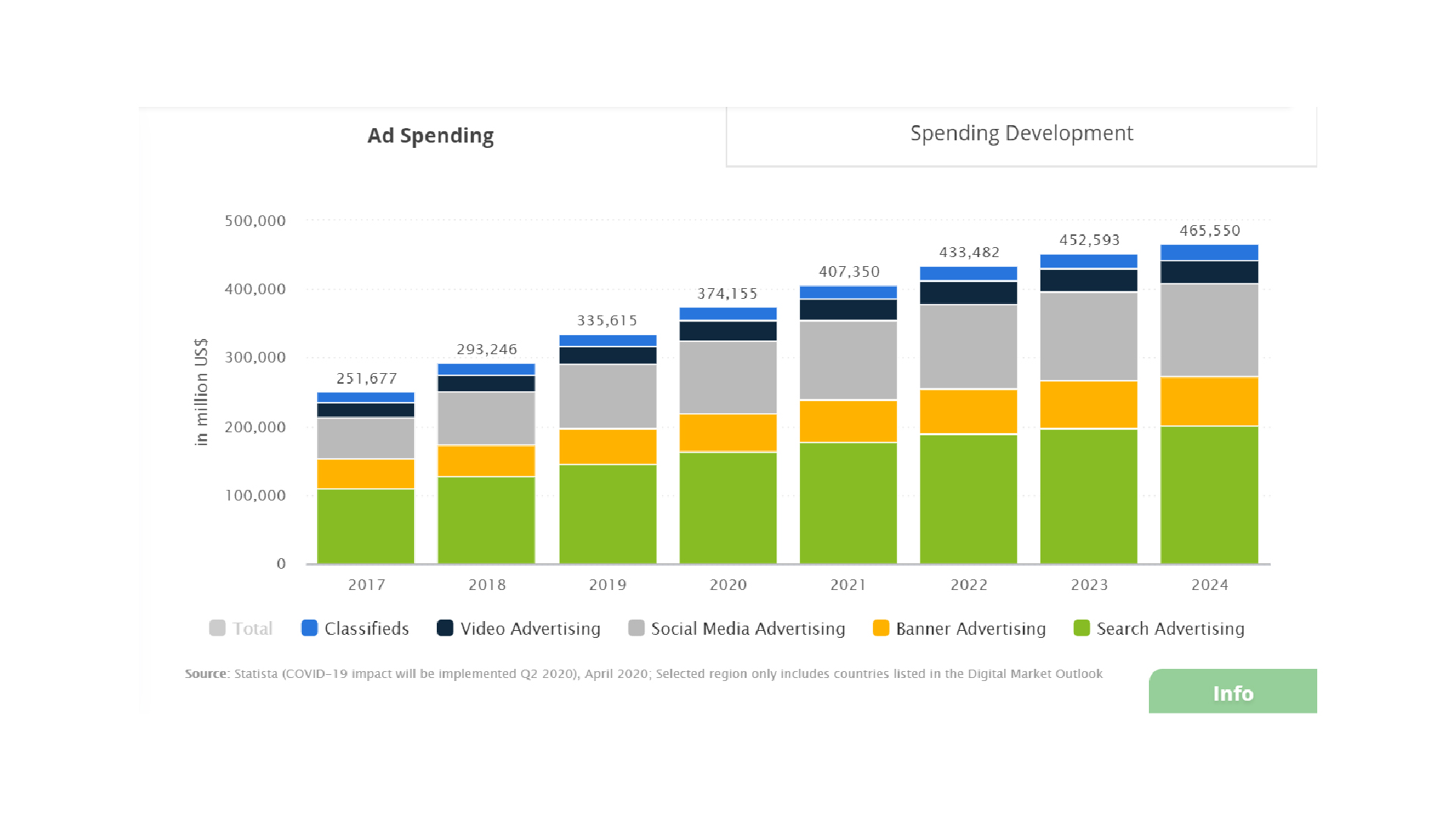Google owns nearly 72% of the search engine market share (see live report here) as well as the world’s largest online display advertising network (we will explain the Google display network to you further down), if your business’s key need is advertising, Google ads is the way to go.
Before explaining to you the main options that you have for advertising through the system, let’s have a look at how Google Ads works.
HOW DO GOOGLE ADS WORK?
Google Ads is based on an auction principle. Every company that advertises is in direct competition with other companies that sell similar or related products/services. For instance, if you are a florist and you want to start advertising online you will compete against other florists and maybe gardening centres.
Businesses choose keywords that they want to bid on, and each click on the ad will cost. The more competitors that use the keyword, the more expensive it will be, and the less chances you will have to rank high in comparison with other businesses that have a higher budget.
The auction principle leads to an average Cost Per Click (CPC) within each industry. Have a look at the average CPC by industry for Search Advertising and for Display Advertising (in USD).

Datasource: https://www.wordstream.com/blog/ws/2016/02/29/google-adwords-industry-benchmarks
Besides the keywords you bid on, your ad ranking (the position of your ad in comparison to your competitors ads) is also determined by a so called “quality score”.
The quality score is a number from 1 to 10 given to your ad by Google according to its “expected click-through rate (how many people out of the amount of people that see your ad will click on it), ad relevance, landing page experience” and more. This factor exists because Google wants to provide the user with the most relevant information. Therefore, the best way to get a good quality score is to put yourself in the shoes of your audience and to create quality content. Read more about what quality content is and what importance it has in ads in The Power of Quality Content.

In Google Ads you can choose from five different types of campaign:
1. Search Network campaigns
Search Ads are ads that appear only when your user searches Google for the (or a similar) service/product that you provide on keywords you have selected. Ads of this category will appear within the Google Search network. This means that you could extend the distribution of your ad a lot further than on the first page of Google Search only. Your ad can show on Google Play, Google Shopping, Google Images, Google Maps – including the App, YouTube and more.
Ads of this category are most often:
- Text ads (ads without a visual support),
- Dynamic search ads (like text ads but with automated features for creating headlines and descriptions),
- Call only ads (used for generating direct phone calls),
- Shopping ads (ads that link directly to the product page on a shop)
- Image / video ads (text ads with a visual support)
Read more here.
2. Google Ads Display Network Campaigns
Much like the Google Search Network, Google Ads Display Network campaigns help you go beyond the Google Search results page and display your ad in a wider variety of places.
So what is the difference between Google Search Network and Google Display Network? Google Search Network is a network of websites and apps on which users make searches (for instance YouTube) while the Display network is composed of over 2 million sites, apps and works without a user’s search.
Google display campaigns reach over 90% of people on the Internet making it a powerful tool for brand awareness. The Display Network usually registers a huge amount of impressions (views of your ads) but less conversions (proportionally less completed actions such as phone calls or purchases for instance) than the Search Network but it is also cheaper (as you can see on the graph showing the average CPC by industry further up).
The Display Network is often used for the purpose of retargeting. In a nutshell: targeting the users that have already interacted with your brand before. How you can reach them? Via other websites: the network contains over 2 million sites! but also in their mailboxes via Gmail or while watching a video on YouTube. Is retargeting the most efficient way of advertising for your business? Learn more about it here.
Of course, retargeting doesn’t cover all the possibilities the Display Network offers.
Ads within the Google Ads Display Network are most often:
- Responsive Display ads (responsive ads will generate ads by mixing titles and headlines that you wrote in the most effective way. They also contain an image and logo: one of the strong characteristics of display ads is their visual nature elaborated to catch the eye).
Now that we have covered both Google Search Network Campaigns and Google Display Network Campaigns (read a comparison here), let’s move on to the third campaign options within Google Ads:
3. Google Ads Shopping Campaigns
Shopping campaigns are a good choice for businesses who want to sell their product directly via their website. This type of campaign enables them to reach an audience that is likely to convert. Because the ad itself contains loads of information such as a photo of your product, its title, its price and more, the chances are high that the user who clicks on it is already interested and wants to buy it.
Ads of this category are (not surprisingly)
Shopping Ads (we mentioned them above in the part dedicated to the Google Search Network Campaign).
If you are interested in knowing more about running Google Shopping Ads for your business, there are different types of Shopping Ads including:
- Product Shopping ads (which focus on one product)
- Showcase Shopping ads (which advertises related products grouped together)
Read more about the Shopping ad options here.
The next campaign type serves another purpose…
4. Google Ads Video Campaigns
Good videos create stories and generate emotions. Video campaigns are effective if you want to tell your customer about your business’s history or values for instance.
The two main options are: In-stream videos are played before, during or after other YouTube videos. You must have seen these ads: some are skippable, some are not. The main benefit of in-stream ads is that they will benefit from the audience choosing to watch the video. On the other hand, there are discovery videos. These videos will appear, alone, as a result for certain searches within YouTube.
Similarly to display ads, video ad’s main purpose is to raise awareness around your brand. Therefore, the cost per impression (for one view) of your ad will be low while the cost per conversion is typically high.
If you are interested, learn about video ad formats here.
5. Google Ads App Campaigns
Last but not least, the App Campaigns within Google Ads. This option is very specific and a must use if you want to advertise an app.
Their purpose is to drive app installations and in-app conversions (like purchases). This type of campaign is quite different from the others as you don’t create individual ads but submit text ideas and assets. The system will then test them and use the best combinations across Google Search, Google Play, Youtube, the Google Display Network and much more.
Read this quick guide to Google Ads App Campaigns if you want to learn more.
Now that you have gained a broad overview of the Google Ad Campaign possibilities, we want to give you…
ADDITIONAL GOOGLE ADS TIPS
Google Ads need a clear goal
Guessing doesn’t work: it’s a data-driven platform and if we can’t see goal completions how do we know it’s working and what it costs. You can track goal completions using Google Tag Manager. Read Next Level: Measure Your Digital Success Through Data for a brief introduction to Google Tag Manager.
Start with a search campaign
If you have never used Google Ads for your business, we advise that you first have a look at Search Network campaigns since these bring the highest conversions, most often directly linked to a better return.
See the forecast for the different proportional results of digital advertising:

Datasource: https://www.statista.com/outlook/216/100/digital-advertising/worldwide
Access the data here.
Be patient and take into account the Google learning phase
Time shows what’s really important – even in ads! Give your ads time in the beginning (at least two weeks) to earn enough impressions and be tested against each other. Make changes only once you have enough data to draw conclusions from. The more data the better and data collection takes time.
Advertising is a full time job
We know how much time and energy it takes to set up the optimal strategy and produce professional, appealing ads. But we also know that once everything is on track, nothing is more exciting than seeing your Ads succeed.
With a Google Ads account on top of your other Google platform accounts, things can get messy. We advise to centralise your data in Google Data Studio.
Final info: we would like to clarify that: no – we are not sponsored by Wordstream. We just think that their content is really good and we found their provided explanations very useful for our blog. Thanks for that Wordstream!
If you are interested in running Google Ads get in touch with us. We look forward to discussing your situation and exploring options with you.